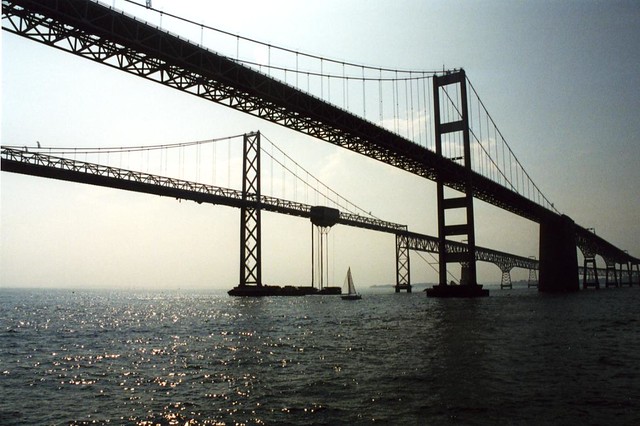For just a bit under 3 hours yesterday, between the spans of the Bay Bridge, I was Aquaman, Cap’n Metis, and Mr. Nemo. Just me, the water, and about 600 other swimmers.
Like all long swims, it was an attempt, partly successful, to maintain form inside formlessness. Not to impose my form on the moving water — no chance of that — but to insert my form-creating body into the Bay, finding my way through the repetitive churn of stroke after stroke, breathing mostly on the left but also on the right, kicking just enough to keep my body streamlined in the water. When the chop hits you in the mouth, or your stroke misses, it’s hard to return to form, but it’s only through form that you can make your way through the water.
I spent a lot of time thinking about currents. The swim started at 11:15 toward the end of the flood, which means I swam into the tide to get between the shadows of the bridge towers before turning across its current to start swimming east. At the end of the swim, when I ducked outside the bridge for the final 1/3 mile onto the Eastern Shore, the ebb pulled me hard southwards. To get out from under the shadow of the eastbound span, I just floated for 10 seconds and let the tide carry me.
I thought about literature, as I always do. Two lines in particular. First, Shakespeare:
whilst this machine is to him (Hamlet, 2.2)
That’s what I thought about myself as I noticed how automatic my stroke became, how little my mind seemed to control arms and legs. Breathing was a bit less mechanic; I had to chose to breath left or right, trying to balance in the sometimes choppy water and also judge my position by the bridge towers. “This machine” is the phrase the prince uses for his body in his love-letter to Ophelia; it’s what I felt like in the water.

Also —
mobilis in mobili (Twenty Thousand Leagues Under the Sea)
I thought about Nemo’s motto, moving inside mobility, and its paradoxes, esp late in the swim when I had to fight the current to keep myself inside the bridges. 
Highlights of the course included two deep shipping channels, the larger of which I swam through at slack tide before I was too tired, at about mile two; two anchored paint barges the stuck their sterns into the course so that we had to detour around their anchor chains; and the sickly warmth of the last 500 yards in shallow, sheltered water leading up to the marina: it made me realize how much cleaner the moving water in the center channel had been. Plus by then I just wanted to get out.
Looking up at the bridge spans from the water made me think of Thoreau hearing the railroad whistle from Walden Pond (Ch 4). No separation from made-things even in the water. The Bay is still in many ways like it’s always been, but bridges and boats and hundreds of churning human bodies mark the water, even if the imprints don’t last.
My arms hurt and my back is sunburned — but what a great way to spend a Sunday in June!

I am so proud of you. You truly live your profession and find ways to fit all your activities even physical activities into your literary knowledge. Love you. Mom